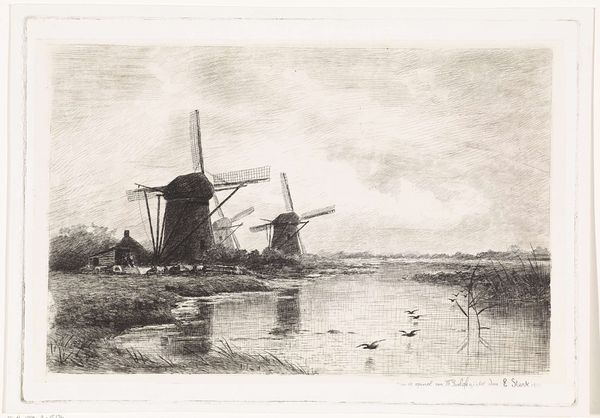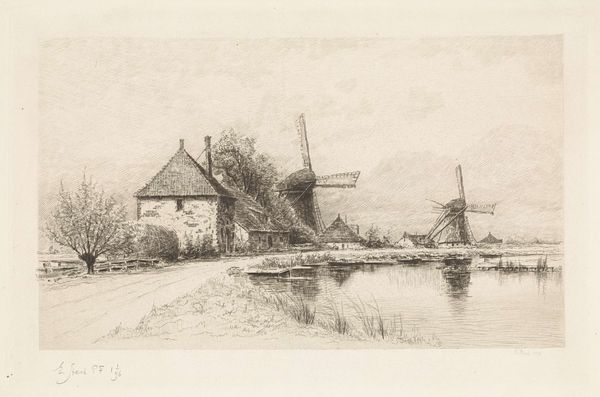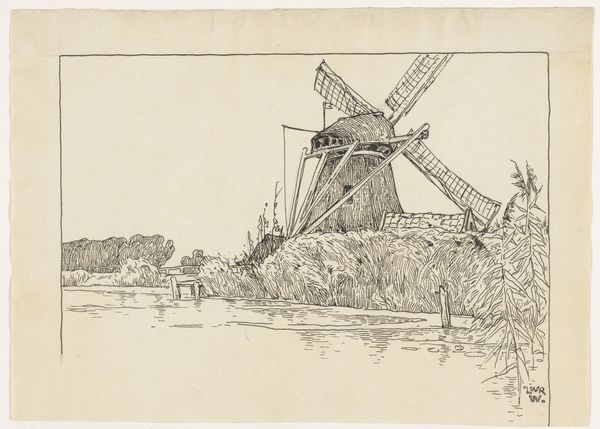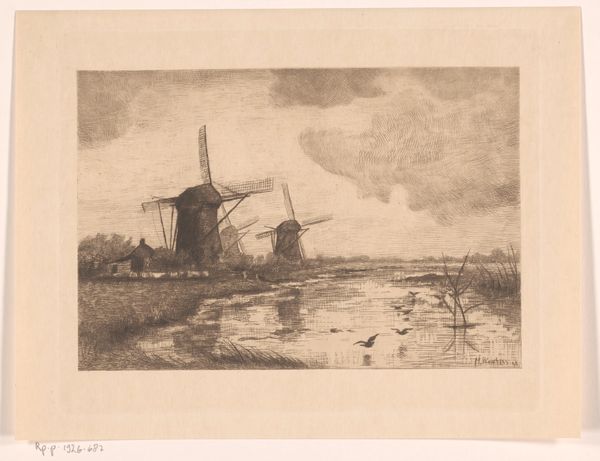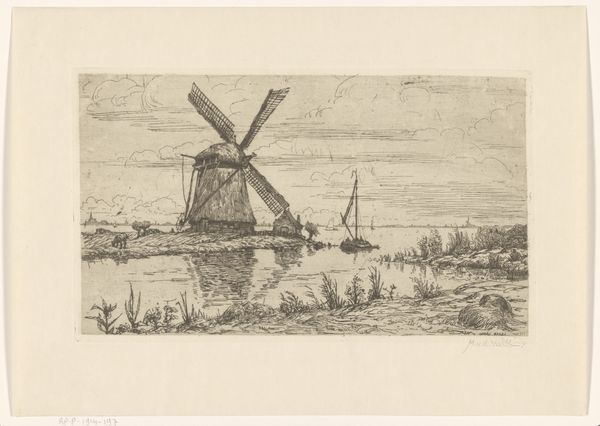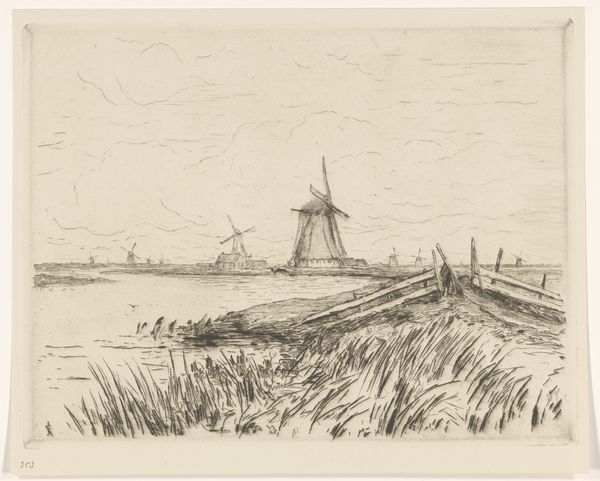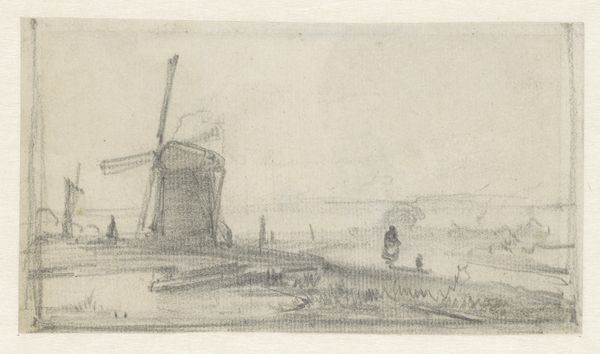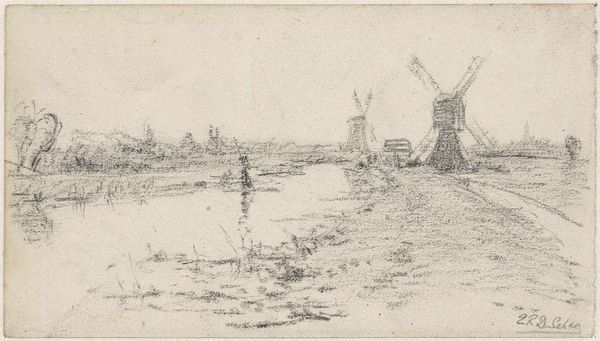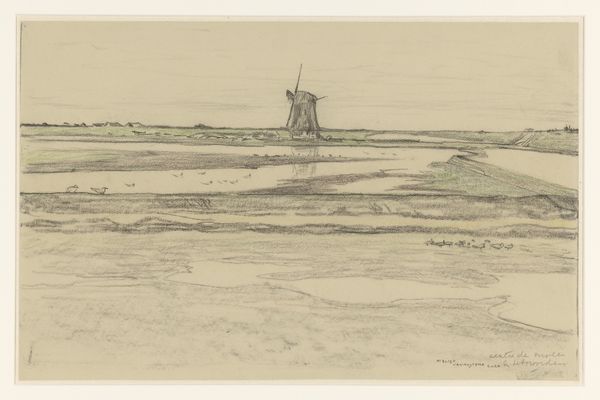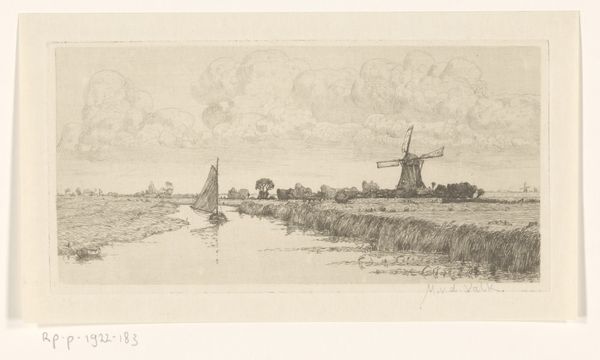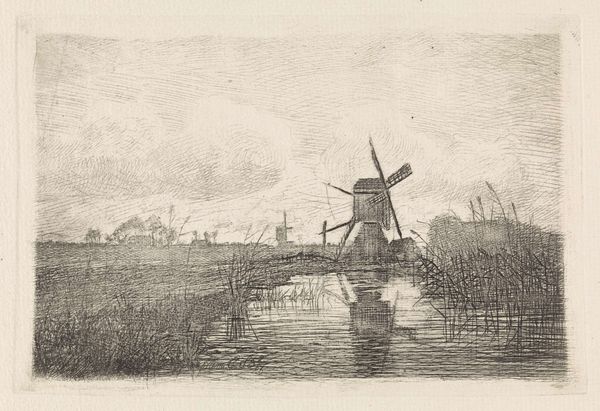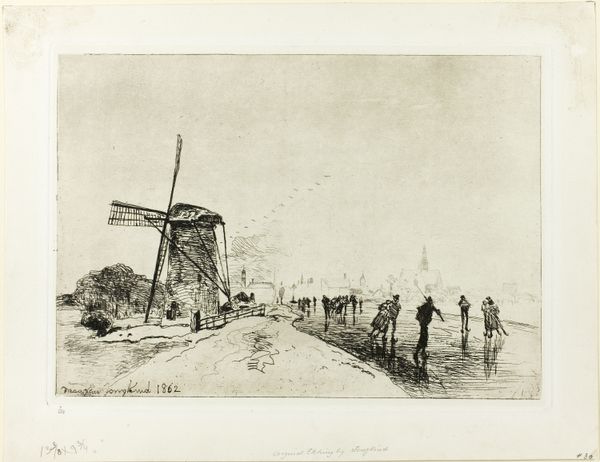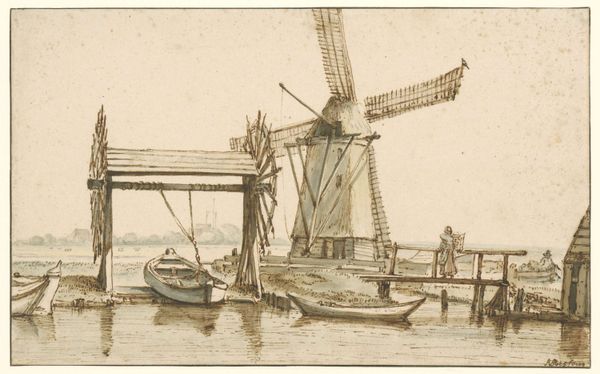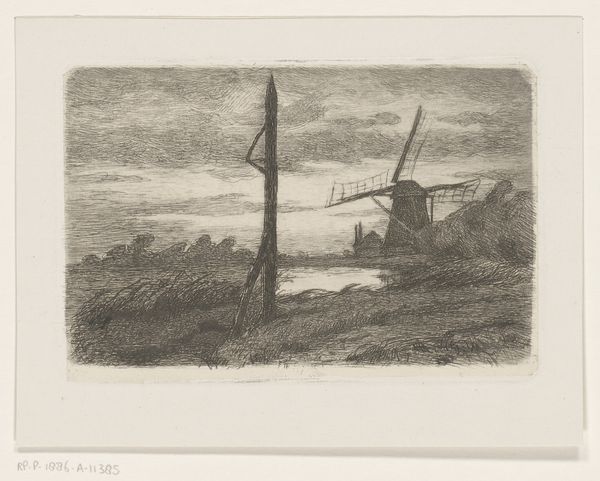
print, etching
#
dutch-golden-age
# print
#
etching
#
landscape
#
etching
#
realism
Dimensions: height 223 mm, width 317 mm
Copyright: Rijks Museum: Open Domain
Curator: It has a lovely, quiet feel, doesn't it? Something very peaceful about this scene. Editor: It does. You can almost feel the stillness. This is "Landscape with Three Windmills along a Waterway," an etching made in 1887 by Elias Stark, and part of the Rijksmuseum's collection. Curator: Three mills lined up! I like how the first one is so bold, right up front, and then the other two are fading away into the misty distance. It’s a bit like a visual echo. Editor: It speaks to a time when these mills weren't romantic relics, but integral components of the Dutch landscape, vital to the very economy. What raw materials would have passed through these structures at that time, shaping a nation’s industry? Curator: Absolutely, but what I adore is the artist’s hand – the way the sky's almost blank, it directs your eyes right to those reflections on the water. So subtle! I can feel his feelings coming through this medium. I also enjoy how he manages the lighting of the sky and its reflection on the river! Editor: The etcher's line itself is fascinating here. Consider the socio-economic forces allowing for mass reproduction, making landscapes such as these available on the burgeoning art market for private enjoyment. Curator: And isn't there a charming bit of whimsy too? I'm sure that, behind the mills, there are a bunch of grazing cattle and what it seems to be some houses or sheds. And the group of ducks flying along the river is an exceptional, tender element. Editor: Agreed, that's the balance. It’s simultaneously a detailed record of a technology… but I'm wondering more about who consumed such imagery. Was this merely aesthetic enjoyment, or a claim to a rural past? Curator: For me it is the idea that artists' expressions, throughout time, connect to what it means to be alive... like this connection between nature and industrial creation by man. And the cattle is life. I love it. I have lived it. Editor: Yes, indeed. Well, looking closer, examining both the technical and social processes reveals, even here, how art mediates our connection with place. Curator: So beautifully put. What a treat it has been!
Comments
No comments
Be the first to comment and join the conversation on the ultimate creative platform.
